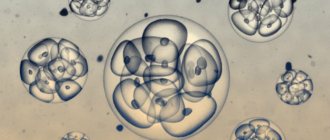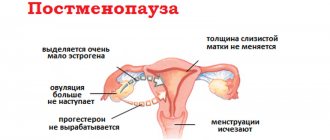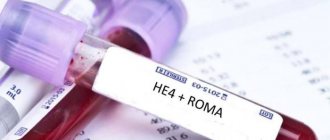Menarche is the age at which a girl experiences her first menstruation, which is an important criterion for assessing proper sexual development. Each young female body, like all the structural and physiological changes that occur in it, is quite unique. The pace of puberty does not occur symmetrically in all girls, as it is influenced by a wide variety of factors. Therefore, menarche in girls has a wide range of norms: for most, the first menstruation occurs at 11–13 years, but a shift in this event is allowed within 10–15 years.
Menarche is rightfully associated with one of the most important criteria of puberty. The first menstruation means that the girl’s ovaries gradually become “adult”, that is, they begin to actively synthesize sex hormones involved in the formation of the menstrual cycle.
The period of puberty (puberty) begins at the age of 8 and, if it proceeds physiologically, ends by the age of 16. During this time period, the formation of the reproductive system occurs and the physical development of the future woman ends. The body actively grows in length, growth zones in the tubular bones close, and a “female” body type is formed due to the specific arrangement of muscle and fat tissue.
According to consistent structural and functional changes in the ovaries and regulatory centers of the brain (pituitary-hypothalamus), puberty occurs in three stages, or periods:
- First, preparatory (prepubertal) period. Approaches 8 - 9 years of age. The body begins to unsystematically and sporadically synthesize sex hormones, but the level of estrogen is still very low.
Intensive growth of the body in length is noted according to the “growth spurt” type, and the girl’s figure acquires feminine features: the contour of the hips is rounded, a “female” pelvis begins to form, and the vaginal epithelium ceases to be single-layered, increasing the number of layers due to the appearance of intermediate cells, from which subsequently new epithelial structures will form.
- Second period. Its onset coincides with the beginning of puberty itself, or puberty. It lasts several years and is conventionally divided into two main stages, or phases. At the beginning (phase one) of the puberty period (10-13 years), changes are characterized by the appearance of daily cyclic hormonal fluctuations, as well as increased production of FSH and LH by the pituitary gland, which, in turn, stimulate the ovaries, so they intensively synthesize sex hormones.
The mammary glands increase in volume, and hair appears on the pubis. The vaginal microflora also changes: lactobacilli appear in its composition.
It is this period that ends with the first menstruation (menarche). In time, it coincides with the end of intensive growth of the body in length.
— The third period is the second, final, phase of puberty (14–16 years). Hormonal secretion becomes cyclical, the ovaries begin to function according to the phases of the menstrual cycle, and high levels of FSH and LH ensure ovulation.
The mammary glands are finally formed, the development of the pelvis and “female” hair growth is completed, the body ceases to rapidly grow in length.
At first, ovulatory cycles may be inconsistent, but their irregularity cannot protect the girl from early pregnancy. At this age, it is possible in 25% of girls who have random ovulation, therefore, trusting relationships with adult close relatives (mother, grandmother, sister) are extremely important for them, who could tell the girl about unwanted intimate relationships at such a young age and their negative consequences, because Despite the external feminine features and the presence of menstruation, the body during this period still partially remains “childish” and is not ready for pregnancy and childbirth.
The culmination of the puberty period is considered the first full ovulation. However, it does not mean complete puberty. By puberty we mean not only the accomplished puberty, but also the development of the entire organism as a whole, when it becomes fully ready to realize the most important mission of a woman - procreation. Puberty starts after the age of 16 and ends by the age of 40.
The untimely onset of menarche in girls can have completely harmless reasons, but more often it signals problems with puberty.
Lack of menarche after 16 years is a serious pathological symptom indicating a lack of sexual development.
Formation of secondary sexual characteristics
Towards the beginning of phenotypic changes in connection with the regeneration of the reticular zone of the adrenal cortex, adrenarche occurs (at 6-8 years). Gonadarche (around 8 years of age) occurs with the onset of stimulation by gonadotropin-releasing hormone (GnRH) of the anterior pituitary gland to secrete luteinizing hormone (LH) and follicle-stimulating hormone (FSH). This in turn triggers the onset of subsequent physical changes, including breast development (thelarche), development of pubic and axillary hair (pubarche), growth spurt, and onset of menstruation (menarche), usually in that order. Adrenarche and gonadarche are not parts of pubertal development.
Heavy discharge
Abundant menarche - excess blood excretion (150 ml). In this case, menstruation lasts more than a week, blood comes out with clots. Large blood loss (menorrhagia) is quite common in adolescents and accounts for 37% of the total number of pathological bleedings.
p, blockquote 43,0,0,0,0 –>
The main causes of the pathology:
p, blockquote 44,0,0,0,0 –>
- previous acute infectious diseases;
- intense physical activity or psychological stress;
- insufficient production of progesterone by the body;
- underdevelopment of the uterus and other internal genital organs.
A large volume of blood lost leads to a sharp development of anemia, which in turn causes increased fatigue, dizziness, and a decrease in platelet levels. In order to normalize the cycle and stop excessive bleeding, medications that contract the uterus (Oxytocin), hemostatic drugs (Vikasol, Dicynon, water pepper extract, calcium gluconate) are prescribed.
p, blockquote 45,0,0,0,0 –>
Since heavy bleeding inevitably leads to anemia, the girl must take iron supplements (Maltofer, Ferrocal, Ferroplex). General strengthening therapy, vitamins, physiotherapy, and acupuncture are also indicated.
p, blockquote 46,0,0,0,0 –>
The following measures are recommended to prevent bleeding:
p, blockquote 47,0,0,0,0 –>
- follow a daily routine and nutritional rules;
- promptly treat chronic and infectious diseases;
- normalize body weight;
- regularly visit a gynecologist and endocrinologist;
- take folic acid, vitamins E and C prophylactically;
- Avoid during monthly intense physical activity and hypothermia.
p, blockquote 48,0,0,0,1 –>
https://youtu.be/0IyLEXDr2L8
Hormonal changes before puberty - adrenarche and gonadarche
Adrenarche - an increase in the production of androgens by the adrenal glands - occurs between the 6th and 8th years of life. In the adrenal glands, regeneration of the zona reticularis, which was suppressed immediately after the birth of the girl, begins, with a concomitant increase in the activity of P450 microsomal enzymes. This inner layer of the adrenal cortex is responsible for the secretion of sex steroid hormones. As a result, the production of androgenic steroid hormones of the adrenal glands - dehydroepiandrosterone sulfate (DHEAS), dehydroepiandrosterone (DHEA) and androstenedione - increases, which occurs from 6-8 to 13-15 years.
Gonadarche - the establishment of normal ovarian function - begins around 8 years of age, when pulsatile secretion of GnRH by the hypothalamus increases. This leads to stimulation of the synthesis of gonadotropins FSH and LH by the anterior pituitary gland, occurs mainly during sleep and is not accompanied by any phenotypic changes.
The first sign of puberty is an increase in pulsatile LH secretion at night. This pulsatile secretion of LH at night is reversed by pulsatile secretion of LH and FSH during the day, which leads to an increase in estrogen levels due to the growth of follicles in the ovaries. Positive feedback from the increase in estradiol levels initiates the LH surge necessary to induce ovulation.
Adrenarche is not necessary for normal ovarian function - gonadarche. This is confirmed by the fact that patients with hypofunction of the adrenal cortex have normal pubertal development. The ovaries, in turn, can begin to function before adrenarche in case of premature pubertal development. On the other hand, gonadal function is not necessary for adrenal function, as evidenced by normal adrenarche in patients with gonadal dysgenesis.
The first phenotypic change during puberty in most cases is the onset of mammary gland development (thelarche), which occurs around 10 years of age. But sometimes there may be an increase in the rate of linear growth 1-2 years before the onset of thelarche, signaling the onset of pubertal development.
After thelarche, pubic hair growth, pubarche, begins to develop (often together with axillary hair), which occurs around 11 years of age. Further events are usually the pubertal growth spurt (9 cm/year), which occurs around age 12, and finally menarche around age 13. Menarche usually occurs 2-2.5 years after thelarche. Normal pubertal development begins within 2.5 standard deviations from the mean, i.e. between 8 and 14 years.
Stages of Puberty
This is a complex endocrine process responsible for physical and sexual development. It lasts for several years and is divided into 2 periods: prepubertal and pubertal.
p, blockquote 6,0,0,0,0 –>
The preparatory (prepubertal) phase of menarche begins at 8-9 years old, when the first changes occur in the girl’s figure. Intensive body growth is also observed. In one year it can increase by 9-10 cm.
p, blockquote 7,0,0,0,0 –>
The puberty period itself also lasts several years. At this time, girls' mammary glands begin to enlarge and pubic hair begins to grow. The body synthesizes hormones, under the influence of which the contours of the hips and waist are formed, and the figure begins to acquire femininity. The final stage of puberty is menarche.
p, blockquote 8,0,0,0,0 –>
The age of 14-16 years completes puberty. The final formation of the mammary glands occurs, the “female” pelvis and female-type hair growth develops. Properly functioning ovaries ensure the regularity of the menstrual cycle and the timely arrival of menstruation. In most cases, the cycle lasts 28-30 days; minor shifts up to 21 or 36 days are not pathological. Delays of several months in adulthood indicate a malfunction of the ovaries and can cause infertility.
p, blockquote 9,0,0,0,0 –>
p, blockquote 10,0,0,0,0 –>
p, blockquote 11,0,0,0,0 –>
Telarche
The first stage of thelarche is the development of the mammary gland buds, usually occurring around 10-11 years of age. Thelarche is usually the first phenotypic change in a series of events during puberty and occurs due to an increase in circulating estrogen levels. Simultaneously with thelarche, estrogenization of the vaginal mucosa and development of the vagina and uterus occur. Further development of the mammary glands occurs during puberty and adolescence. Corresponding changes in the mammary glands are divided into 5 stages, according to the classification of Marshall and Tanner.
Features of the course of the first menstruation
Usually at menarche there is moderate or scanty discharge. They are often brown in color. Normally, the volume of blood lost should not exceed 150 ml.
p, blockquote 34,0,0,0,0 –>
How long does menarche last?
p, blockquote 35,0,0,0,0 –>
Duration ranges from 3 to 5-6 days. The discharge is most abundant during the first two days, then its intensity gradually decreases. Sometimes menarche is scanty and lasts no more than two days, this is also normal.
p, blockquote 36,0,0,1,0 –>
The ability to conceive is formed only six to eight months after menarche, when the formation of the hormonal background is completed. The first menstruation is usually painless, but, as in adult women, a girl may experience nagging abdominal pain, nausea, indigestion, engorgement of the mammary glands, and general weakness. Some girls become emotionally impressionable, irritable or whiny. As a rule, such symptoms disappear without treatment within the first day.
p, blockquote 37,0,0,0,0 –>
p, blockquote 38,0,0,0,0 –>
It is very important to form a girl’s positive attitude towards her critical days. A prerequisite for the mother will be to teach her daughter to calculate the time of menstruation and keep a special calendar. During menstruation, a girl may not disrupt her normal lifestyle, paying increased attention to genital hygiene and avoiding increased physical activity and hypothermia. Before starting sexual activity, it is recommended to use sanitary pads instead of tampons. During your period, you need to shower at least twice a day. Visiting a bathhouse or sauna, swimming in a river or sea is prohibited.
p, blockquote 39,0,0,0,0 –>
Menarche is a natural physiological process that does not require a visit to the doctor. However, some factors may be a reason to visit a pediatric gynecologist:
p, blockquote 40,0,0,0,0 –>
- duration less than 3 days or more than a week;
- the discharge is very abundant, has a bright scarlet color and an unpleasant odor, comes with large clots;
- after establishing a regular cycle, delays of more than 36 days are observed;
- the interval between menstruation exceeds six months;
- Menstruation is accompanied by severe pain, vomiting, and increased body temperature.
Even in the absence of complaints, the first visit to a gynecologist is recommended upon completion of puberty, at the age of no later than 16 years.
p, blockquote 41,0,0,0,0 –>
p, blockquote 42,0,0,0,0 –>
Pubarhe
The onset of pubic hair growth usually occurs after thelarche, around 11–12 years of age, and is often accompanied by axillary hair growth. Pubarche usually occurs after thelarche, but simultaneous development of thelarche and pubarche is also normal. In representatives of the black race, pubarche may precede thelarche, which is not a pathology.
The development of pubic and axillary hair occurs secondary to an increase in the concentration of circulating androgens. Sometimes the concepts of pubarche and adrenarche are used as synonyms, but this is not entirely true. Pubarche is the development of pubic hair, which occurs under the influence of adrenal androgens after the age of 10 years in the stage of pubertal development, and adrenarche is the activation of androgen synthesis in the adrenal glands, which occurs between the 6th and 8th years of life and precedes the onset of pubertal development.
Pubertal growth spurt
Increased estrogen secretion stimulates the production of growth hormone, which in turn stimulates insulin-like growth factor I, which promotes increased somatic growth. The pubertal growth spurt is characterized by an acceleration of the girl's growth, begins at the age of 9-10 years and reaches a maximum speed between 12 and 13 years (9 cm / year).
But this relationship is dose-dependent, and excessive estrogen levels lead to inhibition of the release of growth hormone and somatomedin-C. Subsequently, as a result of the influence of estrogens on the cessation of growth of the epiphyseal growth zones of long tubular bones, growth cessation may occur after a rapid growth spurt.
Estrogens enhance the growth of bones, especially the axial skeleton. Growth hormone has a greater effect on the growth of long bones. This explains the fact that patients with hypogonadism often have a short torso with relatively long limbs (eunuchoid habitus). With growth hormone deficiency, patients often have an appearance opposite to their genetic sex. Estrogens also promote the closure of the epiphyseal growth zones of long bones. So, patients with precocious puberty have an early onset of growth, but ultimately have short stature due to premature closure of the epiphyseal growth plates if timely treatment is not carried out.
Menarche
The average age of menarche (first menstruation) ranges between 12 and 13 years (12.7 years). Menarche usually occurs 2 years after thelarche (development of the mammary gland buds). The menstrual cycle in adolescents is usually irregular during the first 6 months to 1 year after menarche, indicating anovulatory cycles. The establishment of regular ovulatory cycles begins approximately 2 years after menarche.
Delayed menarche can occur in gymnasts, long-distance runners and ballerinas. It has been suggested that the signal for the onset of menarche is the achievement of a certain body weight (17-22% body fat), usually occurring at body weight > 45 kg. But there is no exact data on what affects the delay of menarche more: lack of adipose tissue or stress and physical activity.
Ovulatory menstrual cycles are accompanied by an increase in progesterone levels after ovulation. Ovulation is usually inconsistent for 1-2 years after menarche, resulting in irregular menstrual cycles. After this period, the menstrual cycle in adolescents should become established, and the absence of regular cycles may indicate reproductive disorders.
Content
- 1 Physiology 1.1 Puberty
- 1.2 Link to fertility
- 1.3 Beginning
- 1.4 Timing 1.4.1 Chronic disease
- 1.4.2 Conditions and disease states
- 1.4.3 Impact of stress and social environment
- 1.4.4 Changes over time in midlife
- 2.1 Festive ceremonies
Disorder of pubertal development
Normal pubertal development begins between 8 and 14 years of age (±2.5 standard deviations from the mean). If a girl develops secondary sexual characteristics at age 8, or if secondary sexual characteristics are absent before age 14, or if a girl with developed secondary sexual characteristics does not menstruate before age 16, such patients are subject to additional examination.
For representatives of the black race, puberty can normally begin before the age of 8 years. Isolated premature thelarche or pubarche without other signs of pubertal development may occur, does not require urgent examination, but indicates the need for observation to exclude possible premature pubertal development. Premature thelarche usually occurs in the first 7 years of life, and premature pubarche may be an early sign of polycystic ovary syndrome later in life. Precocious pubertal development is more common in girls (5 times more common than in boys), and delayed pubertal development is more common in boys.
Pubertal development may begin earlier due to the following circumstances:
- in patients with a family history of early pubertal development;
- among representatives of the black race; when living in the equatorial zone;
- when living low relative to sea level; in urbanized cities;
- for obesity;
- in case of blindness.
Late onset of puberty can be observed:
1) with diabetes mellitus;
2) with significant degrees of obesity;
3) with insufficient nutrition;
4) with excessive stress and physical activity.
Culture
Main article: Culture and menstruation
See also: Isolation of girls during puberty
Menstruation is both a cultural and scientific phenomenon, as many societies have rituals and cultural norms associated with it. These rituals usually begin at menarche, and some are performed during each menstrual cycle. Rituals are important to determine the change in a girl's status. After menarche and completion of the ritual, they became a woman according to their culture.
For young women in many cultures, their first menstruation is a marker that signifies a change in status. After menarche, a young woman enters a stage called girlhood, the stage between menarche and marriage. There are cultures that in past centuries and currently practice rites of passage for girls experiencing menarche.
Festive ceremonies
Sekihan, a traditional Japanese dish of steamed sticky rice with azuki beans, is sometimes served after menarche.
In some cultures, a party or celebration is held to celebrate a girl's transition into womanhood. This party is similar to the quinceañera in Latin America, except that the transition is celebrated at a certain age rather than menarche. In Morocco, a girl is thrown a party. All members of her family are invited, and the girl is showered with money and gifts.
When a Japanese girl's first period begins, the family sometimes celebrates it by eating red-colored rice and beans (sekihan)
.
The color of blood and the red color of sekihan
are not related.
All rice in ancient times in Japan was red. Because rice was valuable in ancient Japan (millet was commonly eaten), it was only eaten during celebrations. Sekihan
is a tradition of ancient custom. The holiday is kept secret from the extended family until the rice is served.
In some Indian communities, young women have a special menarche ceremony called Rutu Sadangu.
The Mescalero Apache place great emphasis on their menarche ceremony and it is considered the most important ritual in their tribe. Every year, an eight-day event is held to honor all the girls who menstruated in the previous year. The days are divided into feasts and private ceremonies to celebrate their new status as women.
Rituals of learning
In Australia, the Aborigines treat a girl with “love magic.” She is taught the ways of womanhood by other women of her tribe. Her mother builds her a menstrual hut in which she is confined until the end of her period. The hut is burned and at the end of her period she is bathed in the river. When she returns to the village, she is paired with a man who will be her husband.
In the United States, public schools have a sex education program that teaches girls about menstruation and what to expect at the onset of menarche (often this occurs in 4th grade). Historically, menstruation was a social taboo, and girls were taught about menarche and menstruation by their mother or female role model. Then, and to some extent now, menstruation was a private matter, and girls' menarche was not a public event.
Purification or cleansing rituals
Ulithi tribe of Micronesia call girls menarche kufar
. She goes to a menstrual house, where the women bathe her and cast spells. She will have to return to the menstruation hut every time she starts menstruating. Her parents built her a private hut in which she would live until she got married.
In Sri Lanka, an astrologer is contacted to study the alignment of the stars when a girl experiences menstruation, as it is believed that her future can be predicted. The women of the family then gather at her home and wash her in a ritual bathing ceremony. Her family then has a family party where the girl wears white and may receive gifts.
In Ethiopia, Beta Jewish women were separated from male society and sent to menstrual huts during menstruation and every menstrual period below, as blood associated with menstruation in Beta Jewish culture is considered unclean. Beta Jews built their villages around and near bodies of water specifically so that women would have a place where they could purify themselves. Menstruation huts were built near these water bodies.
Rituals of transformation and scarification
In Nigeria, the Tiv ethnic group cut four lines into the abdomen of their girls during menstruation. The lines are supposed to represent fertility.
Rituals of power
The Navajo people have a holiday called Kinaalda
(kinn-all-spirit). The girls are expected to demonstrate their strength in the races. The girls prepare cornmeal pudding for the tribe to taste. Girls who have reached menarche wear special clothing and style their hair like the Navajo goddess "Changing Woman".
The Nootka (also known as Nootka) believe that physical endurance is the most important quality of young women. During menarche, the girl is taken out to sea and left to swim back.
Movies
Perhaps the most famous film scene involving menarche is one from the horror film Carrie.
(1976).
Carrie White experiences her first period while showering after gym class at school and, unaware of what is happening to her, panics and begs for help, only to be bullied by the other girls in response. The film is an adaptation of the novel of the same name, by Stephen King. Carrie's first period reveals her brutal powers and is central to her dangerous and uncontrollable transformation. This theme is common in horror films, with another notable example being the Canadian horror film Ginger Snaps
(2000), where the protagonist's first period plays a central role in her gradual transformation into a werewolf.
Girls going through their first period are part of many films, although they are not central to their plot, including The Blue Lagoon
(1980),
The Company of Wolves
(1984),
My Girl
(1991),
Return to the Blue Lagoon
(1991),
A. Walk on the Moon
(1999).
Premature pubertal development
Premature puberty is the appearance of secondary sexual characteristics before the age of 8 years. In girls, about 75% of precocious pubertal development is idiopathic, while in boys it is only 40%. Modern capabilities of highly sensitive methods of intracranial imaging, in particular magnetic resonance imaging, may make it possible to identify the causes of these so-called “idiopathic” conditions.
Isosexual precocious puberty is a precocious puberty that corresponds to an individual's genetic sex.
Heterosexual precocious puberty is precocious puberty that develops in a pattern opposite to the individual's genetic sex. Heterosexual precocious pubertal development in girls reflects excessive androgen production by the adrenal glands or ovaries. Isosexual precocious development is more common than heterosexual precocious development.
There are two forms of premature sexual development : GnRH-dependent and GnRH-independent. GnRH-dependent form of precocious puberty (“true”, “complete”, “central”) develops due to premature activation of the hypothalamic-pituitary-gonadal axis, namely with early activation of the hypothalamic generator of GnRH pulsations, and is usually idiopathic.
Treatment of this condition involves the administration of gonadotropin-releasing hormone agonists (zoladex, diferelin, lupron) to suppress the premature activation of the GnRH pulsatility. One of the most serious causes of GnRH-dependent premature pubertal development are tumors of the central nervous system), in particular hamartomas. Treatment of hamartros can be surgical, radiation or medication (GnRH agonists).
GnRH-independent form of precocious sexual development (incomplete, peripheral, premature pseudopubertal development) develops due to the production of sex steroids by the ovaries, which does not depend on hypothalamic-pituitary-gonadal regulation. In some cases, peripheral hormone production can activate the hypothalamic-pituitary-gonadal axis, leading to a mixed form of precocious puberty.
The most common causes of GnRH-independent precocious puberty may be the following conditions:
- functional ovarian cysts (most common cause);
- granulosa cell tumors of the ovaries (subject to surgical removal);
- McCune-Albright syndrome is a polycystic fibrous dysplasia characterized by numerous fibrocystic bone lesions, asymmetric skin pigmentation (“coffee spots”) and precocious puberty;
- autonomous production of estrogen by the ovaries due to genetic mutations of gonadotropin receptors, which leads to their activation and premature sexual development; Treatment of this syndrome consists of prescribing an aromatase inhibitor - testolactone;
- hypothyroidism (there is a delay in bone age, in contrast to advance in all other forms, hormone replacement therapy with thyroxine is used);
- exogenous hormonal drug therapy (it is necessary to discontinue such therapy);
- steroid-producing adrenal tumors (rare, subject to surgical removal).
Diagnosis of precocious puberty and its forms begins by collecting the patient’s medical history. They find out the characteristics of the child’s growth, the peculiarities of the appearance of signs of puberty, family history regarding possible reproductive anomalies, the presence of exogenous hormonal effects, symptoms of thyroid diseases, neurological and cerebrovascular diseases (stroke).
An objective examination evaluates height, body weight relative to age standards, and weight-height ratio. The severity of secondary sexual characteristics is assessed using the Tanner scale, studies of the thyroid gland and neurological status are performed, the skin is examined for the presence of “coffee spots”, ultrasonography, abdominal and pelvic (vaginal or rectal) examination is performed to identify functional cysts and ovarian tumors.
Laboratory tests include assessment of serum levels of estradiol, LH, FSH, TSH (TSH), and human chorionic gonadotropin (hCG). In the case of heterosexual puberty, the levels of DHEAS, 17-hydroxyprogesterone and testosterone are assessed.
The most important radiological test is bone age assessment (in the bones of the left wrist) to assess skeletal maturity. Bone age was increased in all forms of premature puberty, with the exception of primary hypothyroidism (delayed bone age).
Ultrasonography is used to evaluate the pelvic organs (functional cysts, ovarian tumors) and abdominal cavity; if a tumor of the adrenal glands or central nervous system is suspected - computed tomography (CT) or magnetic resonance imaging (MRI), if McCune-Albright syndrome is suspected - bone x-ray.
Delayed pubertal development
Delayed pubertal development is the absence of development of secondary sexual characteristics before age 14 or absence of menarche before age 16. Failure to menarche before age 16 is called primary amenorrhea.
Patients with delayed sexual development and primary amenorrhea are classified according to the presence or absence of mammary gland development (a sign of the presence of estrogen production), as well as the presence or absence of the uterus:
1. The uterus is absent in the case of production of Müllerian inhibitory factor (anti-Müllerian hormone) by testicular tissue. In this case, the karyotype and testosterone level are determined for the differential diagnosis of agenesis of the uterus and vagina (primary amenorrhea in the presence of secondary sexual characteristics in Mayer-Rokitansky-Küster-Gauser syndrome) and congenital insensitivity to the action of androgens (testicular feminization syndrome).
2. If breast development is absent, the FSH level is assessed, which makes it possible to identify ovarian insufficiency (high FSH) or hypothalamic-pituitary insufficiency (low FSH).
3. Cases of absence of the uterus and lack of development of the mammary glands are extremely rare.
4. In the presence of a uterus and the development of mammary glands, the management of patients is similar to that for secondary amenorrhea.
The most common cause of primary amenorrhea and delayed sexual development is gonadal dysgenesis (Turner, Shereshevsky-Turner syndromes). In second place in frequency is agenesis of the uterus and vagina (primary amenorrhea in the presence of secondary sexual characteristics in Mayer-Rokitansky-Küster-Gauser syndrome), in third place is insensitivity to the action of androgens (testicular feminization syndrome).
Treatment
The first task of the doctor is to establish the cause of the violations. In the absence of indications indicating the presence of pathologies, the girl is recommended to undergo regular observation by a pediatric gynecologist and follow the rules of hygiene. In other cases, treatment is prescribed. During early menarche, medications that suppress the production of hormones by the pituitary gland are indicated. If early menstruation is caused by tumors, they are treated surgically.
p, blockquote 29,0,0,0,0 –>
To treat genital infantilism, hormonal therapy and drugs that normalize metabolic processes in the body are prescribed. Psychotherapy sessions and physiotherapeutic procedures are useful. Correction of nutrition and normalization of weight in case of excessive thinness are of great importance.
p, blockquote 30,0,0,0,0 –>
How to speed up the arrival of menarche?
p, blockquote 31,0,0,0,0 –>
In most cases, it is enough to reconsider the girl’s daily routine and diet, or improve living conditions and the level of psychological comfort in the family. If there are serious pathologies, it is necessary to convince the girl that the prescribed treatment will help her be healthy and have children in the future. However, it is not recommended to focus too much attention on the absence of menstruation, much less intimidate with possible diseases.
p, blockquote 32,0,0,0,0 –>
p, blockquote 33,0,0,0,0 –>
Menstrual cycle
The hypothalamus, pituitary gland, ovaries and uterus are components of the female reproductive system that take part in the establishment and regulation of the menstrual cycle and function through positive and negative forward and feedback connections. In a genetic female fetus, at the 20th week of development, the ovaries contain 6-7 million germ cells, the number of which decreases to 2 million at the time of birth and to 300,000 before the onset of puberty.
The menstrual cycle normally lasts 28 days (variations from 21 to 35 days). Only 15% of women have a 28-day menstrual cycle. The menstrual cycle is most irregular during the 2 years after menarche and 3 years before menopause (the last menstruation in a woman’s life). Anovulatory cycles during these periods are 6-35%.
The menstrual cycle is divided into two 14-day phases: I - follicular and II - luteal, characterized by changes in the ovaries during the cycle. These phases are also called proliferative and secretory, reflecting synchronous changes in the endometrium during the same period of time. These cyclic changes occur in the superficial, functional layer of the endometrium (both its compact and spongy layers), whereas the basal layer of the endometrium is insensitive to hormonal stimuli and remains intact throughout the menstrual cycle (regenerative zone).
During the follicular phase of the cycle, the release of FSH by the pituitary gland causes the development of primary ovarian follicles. Ovarian follicles produce estrogens, which, in turn, stimulate endometrial proliferation. Under the influence of FSH, usually only one of these follicles (dominant) reaches maximum development - the stage of a mature (tertiary, Graafian) follicle; others stop developing at different stages (primary, secondary follicles).
In the middle of the menstrual cycle, around the 14th day, in response to the achievement of the maximum concentration of estrogens synthesized by granulosa cells of the follicles, a peak in LH secretion by the pituitary gland occurs. This LH peak stimulates ovulation - the rupture of the wall of the mature follicle and the release of the egg, which almost immediately enters the lumen of the ampullary part of the fallopian tube.
After ovulation, the second, luteal phase of the menstrual cycle begins. The dominant follicle in which ovulation took place accumulates luteal pigment and develops into the corpus luteum. The corpus luteum, next to the secretion of estrogen, begins to produce progesterone, which promotes secretory changes in the endometrium (decidualization, decidual reactions - accumulation of glycogen, as well as increased vascularization) to ensure implantation of a fertilized egg.
If fertilization does not occur, the corpus luteum degenerates and progesterone (and estrogen) levels decrease. With a sharp decrease in the level of progesterone and estrogen in the endometrium, ischemia and desquamation of the epithelium of the functional layer develops - menstruation (menstrual phase).
Follicular phase
Canceling the influence of estrogen and progesterone at the end of the luteal phase of the previous menstrual cycle leads to a gradual increase in the release of FSH by the pituitary gland. In turn, FSH stimulates the growth of 5 to 15 primordial follicles (eggs, the development of which is stopped at the diplotene stage in the prophase of the first meiotic division, surrounded by a single layer of granulosa cells), which means the beginning of the first, follicular, phase of the new menstrual cycle. The development of primordial (primary) follicles to the Diploten stage of prophase of the first meiotic division does not depend on the action of gonadotropins.
Of these primordial follicles, usually only 1 becomes dominant and matures into a preantral, secondary follicle (an oocyte surrounded by the zona pellucida with several layers of granulosa and theca cells). The development of preantral follicles is gonadotropin dependent.
Selection of the dominant follicle occurs on days 5-7 of the menstrual cycle. The preantral follicle secretes estrogens, accumulates follicular fluid and matures to the stage of ovulatory (tertiary, Graafian) follicle. FSH is responsible for inducing the synthesis of LH receptors and the aromatase enzyme, which is responsible for the conversion of androgens to estrogens in the growing follicle. Estrogens act synergistically with FSH and increase the number of FSH receptors in granulosa cells of the follicle, as well as their mitotic activity.
The follicle develops and reaches preovulatory maturity through the production of estrogens, which enhance its maturation and also stimulate the formation of FSH and LH receptors in an autocrine manner. Estrogens are produced by the “two-cell”, “dagonadotropin pathway”. The cells of the inner theca membrane of the follicle (papa cells) produce androstenedione in response to LH stimulation, and the granulosa cells of the follicle, under the influence of FSH and with the help of the aromatase enzyme, convert this androstenedione into estradiol.
The synthesis of androgens, which are also converted into estrogens, stimulates LH. Androgens promote atresia of non-dominant follicles. Androgens in high concentrations are subject to 5a-reduction into more active androgens. A premature increase in LH secretion also reduces the mitotic activity of granulosa cells and contributes to degenerative changes in the follicles.
An increase in the level of circulating estrogens, according to the law of central negative feedback, affects the secretion of FSH by the pituitary gland. This leads to the withdrawal of gonadotropins supporting other developing follicles. The dominant follicle is protected from a decrease in FSH levels due to the increased concentration of FSH receptors in it. In addition, increased vascularization of the inner layer of theca cells also contributes to greater sensitivity of the dominant follicle to the action of FSH. By suppressing the secretion of gonadotropins by increasing its own estrogen production, the dominant follicle optimizes its own development by stopping the growth of other follicles.
Ovulation
At the end of the follicular phase, estrogen levels increase significantly and reach a critical (peak) value (> 200 pg/ml), which is observed for about 50 hours, which is a trigger for the anterior pituitary gland to release the maximum amount of LH. This positive feedback between rising estrogen levels and rising LH concentrations is enhanced by low progesterone levels.
Ovulation occurs due to LH-induced rupture of the follicle and release of a mature egg approximately 34-36 hours after the onset of the LH rise or 10-12 hours after the LH peak. The LH surge initiates the resumption of meiosis in the oocyte, causes luteinization of the granulosa cells of the follicle and stimulates the synthesis of prostaglandins and progesterone necessary for follicle rupture. Degenerative changes in the follicle wall can develop due to the destruction of collagen, which leads to both passive reduction and rupture of the follicle. Prostaglandins and lysosomal enzymes (proteases) cause degenerative changes in the follicle wall.
Ovulation is accompanied by the completion of the first meiotic division with the release of the first polar body. The egg usually enters the fallopian tube and, thanks to the movement of the cilia of its epithelium, moves into the uterus. This process usually lasts 3 to 4 days. If fertilization of the egg does not occur within 24 hours after ovulation, it degenerates.
Luteal phase
After ovulation, the luteal phase of the cycle begins. Granulosa cells and the inner thecal membrane of the follicle line its wall and, under the influence of LH, form the corpus luteum. Life expectancy and steroidogenic activity of the corpus luteum depend on prolonged tonic LH secretion, which leads to an increase in the secretion of progesterone by the corpus luteum. Normal function of the corpus luteum requires optimal preovulatory development of the follicle (i.e., adequate FSH stimulation) and constant tonic LH support.
The corpus luteum synthesizes estrogens and a significant amount of progesterone, causes further development of glands and secretory changes in the endometrium (vascularization, accumulation of glycogen), which are preparatory processes for implantation of a fertilized egg. The peak secretion of progesterone by the corpus luteum occurs around the 8th day after the LH peak, which affects the maturation of the secretory endometrium and suppresses follicular growth.
Each day of the luteal phase is accompanied by certain microscopic changes in the glands and stroma of the endometrium. Implantation usually occurs on days 22-23 of the menstrual cycle, coinciding with the maximum intracellular apocrine secretory activity of endometrial cells.
If fertilization occurs, the developing trophoblast begins to synthesize human chorionic gonadotropin (hCG), a glycoprotein similar to LH, which provides support for the function of the corpus luteum (development of the corpus luteum of pregnancy), i.e. stimulates the secretion of estrogen and progesterone, which is necessary to maintain the endometrium until the development of the placenta and the beginning of its hormone-producing function (8-10 weeks of gestation). Insufficient function of the corpus luteum causes the so-called luteal phase defect of the cycle (luteal phase insufficiency), which is considered one of the possible causes of abortion at an early stage.
If fertilization, and therefore the synthesis of hCG caused by it, does not occur, the corpus luteum degenerates (corpus luteum of menstruation), the level of progesterone and estrogen decreases, hormonal support of the endometrium does not occur, ischemic changes develop in it and menstruation occurs - rejection of the functional layer of the endometrium.
Girls' first periods
The first menstruation (called menarche) is an important event in a girl’s life. As a rule, it is not unexpected - older girlfriends inform. And under the influence of these conversations, some girls are even afraid of the onset of menstruation.
Unfortunately, for some reason many mothers are embarrassed to talk in detail with their daughters about this, limiting themselves only to hygienic advice.
But a girl needs to know that the onset of menstruation marks an important milestone in puberty. Since there is menstruation, it means pregnancy is possible.
Another thing is that the girl’s body is not yet developed enough, and therefore pregnancy and childbirth can become an overwhelming test for her. Obstetricians are aware of cases of very difficult births in girls aged 14-15 years...
The first menstruation usually appears at age 13, plus or minus a year. Fluctuations in one direction or the other may be somewhat greater. But, if menstruation began very early (before 10 years) or very late (after 15), some trouble may be suspected, and the girl should be shown to a doctor.
The reasons for delayed menstruation are varied: sometimes it is an individual characteristic of the body, sometimes the result of infectious diseases suffered in early childhood or emotional stress, physical overload, as happens, for example, in girls who do gymnastics too intensely and uncontrollably. It may also be a sign of an endocrine or other disorder.
Menstruation is the final stage of a complex chain of processes that rhythmically occur in the female body. Each such cycle lasts 28-30 days, sometimes it is shorter - 21 days and longer - 35 days.
What happens during the menstrual cycle, that is, during the period from the first day of one to the first day of the next menstruation?
The cycle is divided into two phases. The main event of the first is the maturation of the egg and its release from the ovary; this period is characterized by the activity of special hormones—estrogens—in the body; in the second phase, another hormone, progesterone, becomes dominant.
Under their influence, changes occur in all hormone-dependent organs: the uterus, fallopian tubes, vagina, mammary glands. But the mucous membrane lining the uterine cavity changes most of all.
Its blood supply increases, it swells and becomes loose.
These changes are designed so that in the event of pregnancy, the fertilized egg, which by this time, having moved through the tube, enters the uterus, can reliably attach here and begin to develop. If fertilization does not occur, the swollen mucous membrane is rejected along with the unfertilized egg. This is menstrual bleeding.
For many people, a rhythmic menstrual cycle is not established immediately, but after about six months or a year. Before this, menstruation can occur more often or less often, sometimes very scanty, sometimes, on the contrary, abundant.
On the eve of menstruation, girls often complain of heaviness in the lower abdomen, mild headache, and weakness. These are natural phenomena and should not cause concern. By the way, some girls during menstruation are extremely irritable, touchy, and their mood deteriorates. You need to learn to overcome such reactions, otherwise it will be difficult for yourself and unpleasant for others.
During menstruation, mental and physical performance does not decrease, and the girl can do all her usual activities without changing her usual routine. You can do morning exercises, abstaining only from exercises associated with large overloads.
Running, cycling, skiing, skating, and swimming are contraindicated, as this can lengthen the duration of menstruation and increase blood loss.
Swimming is also prohibited due to possible cooling and the risk of infection entering the uterine cavity, since the natural mucous plug that usually closes the cervical canal is absent during menstruation. There is no need to take a bath these days.
Hygienic procedures include washing two or three times a day under a running stream of water - from a jug or under a shower, a shared shower every day if possible, and in any case, at least once a week. You need to use special pads or cotton wool and change your panties daily.
Menstruation lasts on average 3-5 days, and not much blood is lost - from 50 to 100 milliliters. If its duration is longer, and the blood loss is greater, if the girl experiences a sharp headache, cramping pain in the abdomen, severe weakness, it is imperative to contact the pediatric gynecology office or an obstetrician-gynecologist at the antenatal clinic.
I want to warn parents: a teenage girl cannot yet distinguish what is natural and normal in these new phenomena for her, and what signals trouble.
The development of her menstrual cycle must be carefully monitored. First of all, this is, of course, the mother’s business. If a doctor offers treatment, you cannot refuse.
After all, the daughter’s future motherhood and her marital happiness may depend on whether or not measures are taken in a timely manner!
A. Zavodova, Doctor of Medical Sciences
Source: https://domashniy-medic.ru/menarkhe










